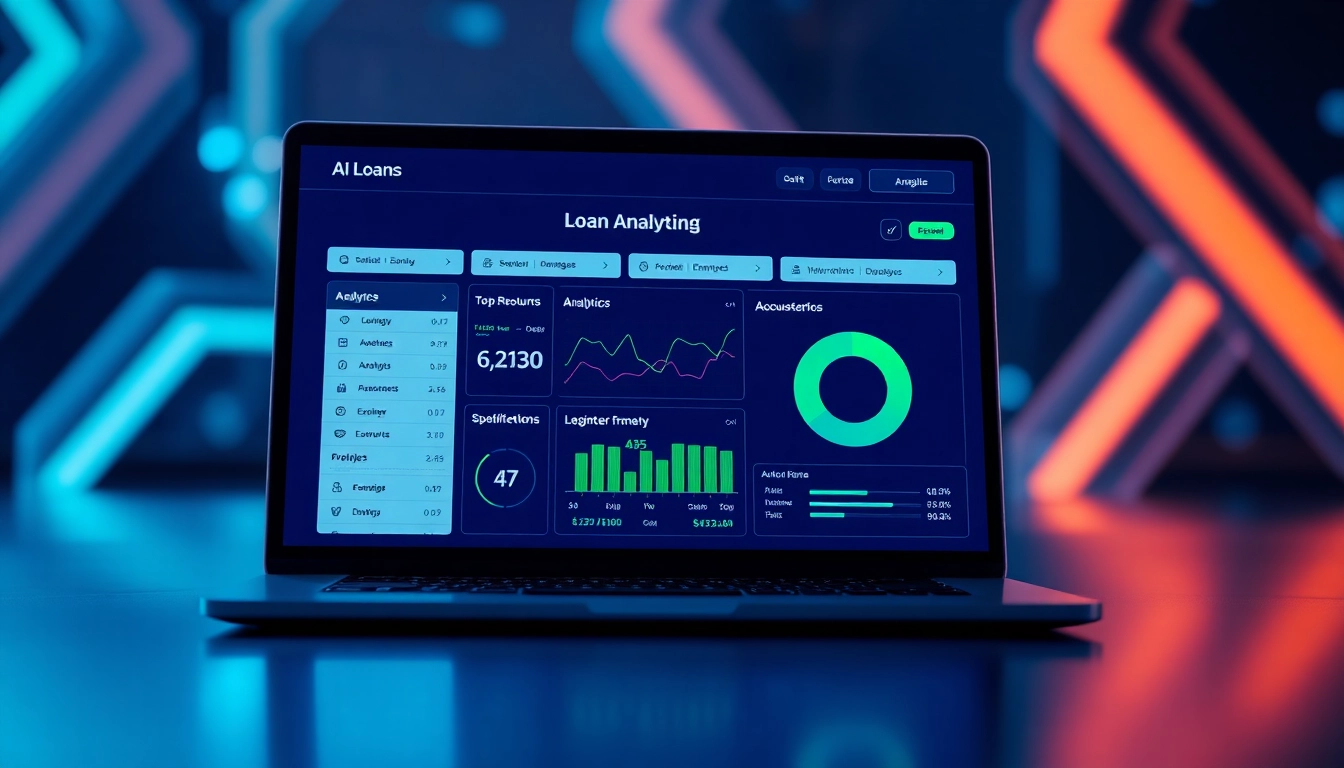Understanding the Mortgage Process with AI
The mortgage process, long seen as daunting and complex, is evolving rapidly with the advent of artificial intelligence (AI). By leveraging AI technologies, lenders and borrowers alike can streamline what has traditionally been a cumbersome sequence of tasks. From application to approval and beyond, mortgage process with AI presents an opportunity to enhance efficiency, reduce errors, and improve customer satisfaction. This comprehensive exploration will outline the fundamental aspects of the mortgage process and how AI is reshaping this experience.
What is the Mortgage Process?
The mortgage process typically involves several key steps:
- Pre-qualification: Potential borrowers discuss their finances with lenders to understand what they can afford.
- Application: Borrowers fill out a mortgage application, providing personal and financial information along with necessary documentation.
- Processing: Lenders review the application, verify the provided information, and assess an applicant’s creditworthiness.
- Underwriting: A thorough examination of the application by an underwriter, who assesses risks and makes decisions on approval.
- Closing: Once approved, the loan is finalized, and necessary documents are signed to secure the mortgage.
Throughout this journey, many potential pitfalls exist that can slow down the process or result in frustrating experiences for borrowers. AI is stepping in to mitigate these challenges at every stage, from the initial inquiry to the final signature.
Introduction to AI in Mortgage Processing
AI in the mortgage industry encompasses various technologies, including machine learning, natural language processing, and robotic process automation (RPA). These tools facilitate a transformation in how lenders interact with applicants, process inquiries, and approve loans.
For instance, machine learning algorithms analyze vast amounts of data to identify patterns in borrower behavior, improving risk assessment during underwriting. Similarly, natural language processing allows chatbots to handle initial customer inquiries, providing answers quickly and efficiently while freeing up human resources for more complex tasks.
Benefits of Integrating AI in Mortgages
The integration of AI technologies offers numerous advantages:
- Efficiency: AI speeds up the mortgage process by automating repetitive tasks, allowing borrowers to complete applications and receive feedback faster.
- Accuracy: Automated document verification reduces human error, ensuring that the information is precise and compliant with regulatory requirements.
- Cost Reduction: Lower operational costs often translate into better loan terms for borrowers, thanks to reduced processing times and labor costs associated with traditional methods.
- Enhanced Customer Experience: AI-driven personalized services cater to individual borrower needs, making the process smoother and more user-friendly.
How AI is Transforming Loan Applications
The loan application phase is critical for both lenders and borrowers. AI-driven innovations are revolutionizing key aspects of this stage in several impactful ways.
Simplifying Document Verification
Document verification is often one of the most tedious tasks in the mortgage process. Advanced AI tools leverage Optical Character Recognition (OCR) to swiftly and accurately extract data from various documents, including tax returns, bank statements, and pay stubs. These OCR systems can identify relevant data, categorize it, and insert it into the appropriate fields within the loan application system. This reduces the time required for manual entry and significantly decreases the chances of errors, ultimately leading to faster approvals.
Enhancing Customer Personalization
AI algorithms analyze data from applicants to develop a rich understanding of their financial habits and preferences. This information allows lenders to offer tailored loan products that best meet individual needs, thereby enhancing customer satisfaction. For instance, AI can identify significant trends in borrower data to personalize communication throughout the mortgage process, helping borrowers feel valued and understood.
Real-time Application Processing
Through the use of automated systems, lenders can now process applications in a fraction of the time it would typically take. AI can continuously monitor and analyze applications for discrepancies or missing documents, allowing lenders to address issues proactively. Real-time processing not only expedites the approval timeline but also improves borrower trust and engagement as they receive timely updates on their application status.
AI Applications in Underwriting
Underwriting remains a crucial step in the mortgage process, demanding a keen analysis of risk and compliance. AI is transforming this area significantly, yielding improved outcomes for both lenders and borrowers.
Automating Risk Assessment
AI enables a more nuanced approach to assessing risk during underwriting. Machine learning models can analyze patterns from historical data to predict potential borrower behavior, including default probabilities. By employing these predictive analytics, lenders can make informed decisions, tailoring their risk assessments more accurately to individual circumstances rather than relying solely on guidelines.
Increasing Accuracy in Loan Approval
AI-driven systems enhance the accuracy of loan approvals by integrating diverse data sources, such as credit scores, employment history, and even social media activity in some advanced implementations. Utilizing comprehensive datasets empowers lenders to make decisions that are both fair and reflective of the applicant’s financial health, which can result in higher approval rates for creditworthy applicants and a reduction in unnecessary denials.
Fraud Detection and Prevention
Fraud in the mortgage space can impose considerable risks on lenders and borrowers alike. AI technologies deploy algorithms that monitor applications for unusual patterns, flagging potential fraudulent activities in real time. By cross-referencing various data points and evaluating inconsistencies within submitted documents, AI enhances the overall security of the approval process, protecting stakeholders from loss and fostering confidence in the system.
Challenges in Adopting AI for Mortgages
While integrating AI into the mortgage process offers numerous advantages, some challenges must be addressed to maximize its efficacy.
Technological Barriers
The adoption of AI technologies requires considerable investment in both infrastructure and training. Many smaller lenders may lack the necessary resources to implement sophisticated AI solutions, which could lead to a divide in service quality between large and small institutions. Additionally, technological integration poses challenges, as existing systems may not be compatible with new AI-based tools.
Maintaining Human Interaction
Despite the efficiencies AI brings, personal interaction remains a vital component of the mortgage process. Borrowers often seek guidance through complex circumstances that require empathy and understanding, aspects that AI alone cannot provide. A balance must be achieved between leveraging AI’s benefits while ensuring that human agents are available to assist customers where needed.
Regulatory and Compliance Issues
The mortgage industry is heavily regulated, creating complexity in how AI tools can be utilized. Lenders must ensure that their AI systems comply with existing regulations related to data protection, fair lending, and discrimination. Navigating this landscape requires careful planning to avoid potential pitfalls and legal repercussions, which can deter some lenders from pursuing AI initiatives.
The Future of the Mortgage Process with AI
As the mortgage landscape continues to evolve, AI’s impact is set to deepen, bringing forth new possibilities for both lenders and borrowers.
Predicting Industry Trends
Looking ahead, AI is predicted to become increasingly prevalent in areas such as virtual reality (VR) for property tours, enhanced data analytics for predictive modeling, and even blockchain for securing transactions. By adopting an integrative approach that improves existing processes while exploring new avenues, the mortgage industry can anticipate a landscape driven by seamless technologies.
Lessons from Successful Implementations
Companies that have successfully integrated AI into their mortgage operations often share several key elements: a clear strategy for implementation, continuous staff training to effectively utilize AI tools, and a focus on maintaining high levels of customer service. Learning from these success stories can guide other institutions seeking to refine their processes through AI.
Preparing for an AI-Enhanced Mortgage Landscape
To thrive in an AI-enhanced mortgage environment, lenders must invest in technology that aligns with their business goals while fostering a culture of innovation. This entails supporting teams with the necessary resources to adapt to evolving technologies, strategizing around actionable insights generated from AI tools, and remaining attentive to regulatory shifts that may impact AI utilization.
In conclusion, the integration of AI into the mortgage process is not just a trend; it’s a fundamental shift towards enhancing efficiency, accuracy, and customer satisfaction in an industry ripe for transformation. By embracing these technologies and addressing the accompanying challenges, both lenders and borrowers stand to benefit immensely from a streamlined, responsive mortgage process that meets the demands of the modern era.








Leave a Reply